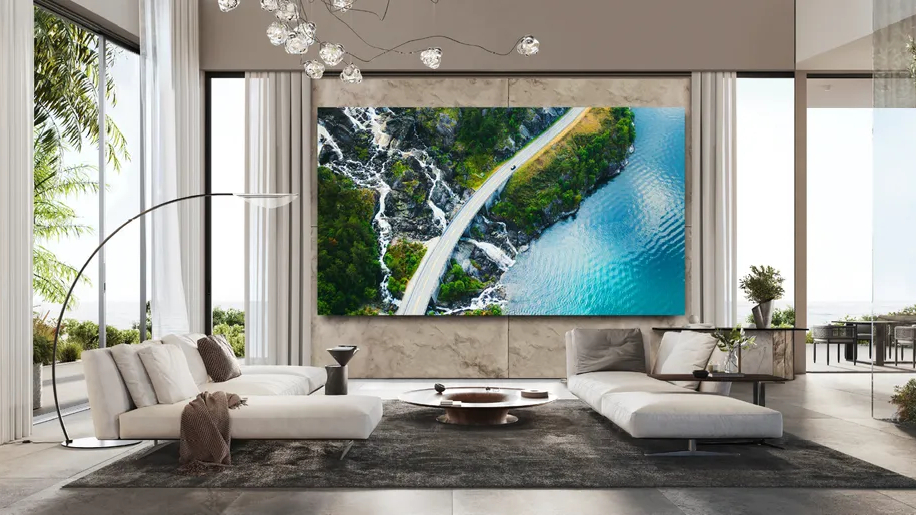Philips thinks Micro LED 100-inch TVs belong in the lab not your lounge – at least for now
Philips weighs in on the house deposit versus TV debate

Philips has revealed why it has no interest in entering the 100-inch TV market for the foreseeable future.
Philips’ senior director of product strategy and planning, Danny Tack, explained that the company’s not interested in launching a 100-inch TV during an interview with What Hi-Fi? at a press event in Barcelona earlier this week.
Tack said the main reason is that thanks to the cost of making a 100-inch TV, the market is so small Philips sees no reason to enter it.
“If you look at our current OLED range we go as far as 77-inch. After that, you get diminished returns with the cost. Above that you have 80-inch, and we think after that the market is very small. So if you think about the 100-inch market, that’s really niche, so the reward is too small for the effort... and also they cost as much as a house,” he told What Hi-Fi?.
Despite the company's current lack of interest, Tack didn't rule out Philips eventually launching a 100-inch set, confirming the company is experimenting with the Micro LED tech to use in 100-inch TVs, but only in lab conditions.
“100 inches will mainly come from Micro LED, and we are looking at them. Back in Taiwan, we’re experimenting with Micro LED, but it’s more just in a lab environment at the moment, rather than an idea to bring them into your home,” he said.
Micro LED is a screen technology being marketed as “the next big step” for TVs. You can get a detailed breakdown of its strengths and weaknesses in our What is Micro LED guide, but the short version is that Micro LED is fairly nascent screen technology that works in a similar way to OLED, in that it creates images using self-emitting light rather than a full backlight.
The latest hi-fi, home cinema and tech news, reviews, buying advice and deals, direct to your inbox.
The difference is that rather than using organic light-emitting diodes, Micro LED uses tiny, non-organic LEDs that can go brighter and don't have the potential for burn-in or degradation over time, but Micro LED sets still have the pixel-level contrast control of OLED.
The tech is already available to consumers, though only those with enormous houses and budgets – the smallest and cheapest model launched so far is LG's 118-inch Magnit TV, which costs a staggering $237,000 (around £190,000 / AU$365,000).
The news comes during a boom period for 100-inch TVs with Samsung, Hisense, Sony and TCL all also set to launch new 100-inch sets in the near future. However, the majority of these use Mini LED rather than Micro LED panels. Mini LED is a competing TV panel tech that, despite the similarities in name, works differently to Micro LED because it involves a backlight (the Mini LED element) and isn't self-emissive in the way of Micro LED and OLED.
We'll be curious to see how the TVs perform when, and if, we get them into our test rooms.
MORE:
These are the best OLED TVs we’ve tried and tested
Check out our picks of the best TVs
If you’re getting a TV, you’ll also want a soundbar. These are the best soundbars we’ve reviewed

Alastair is What Hi-Fi?’s editor in chief. He has well over a decade’s experience as a journalist working in both B2C and B2B press. During this time he’s covered everything from the launch of the first Amazon Echo to government cyber security policy. Prior to joining What Hi-Fi? he served as Trusted Reviews’ editor-in-chief. Outside of tech, he has a Masters from King’s College London in Ethics and the Philosophy of Religion, is an enthusiastic, but untalented, guitar player and runs a webcomic in his spare time.
